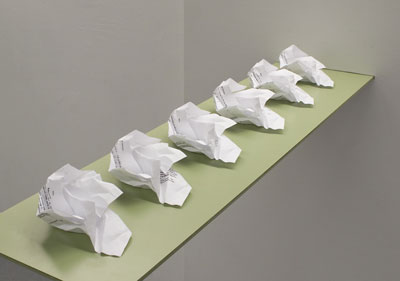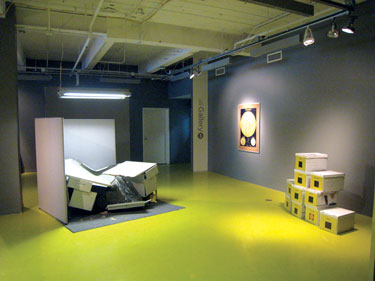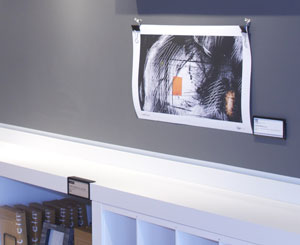“Usefulness: Construction, Deconstruction, Reconstruction” at the Sharp
By Joe Iverson

With the semi-completed renovation of the Sharp Building revealed, the SAIC community has murmured its delight over the return to unencumbered access. Rumor has it that the glass-walled ground level is destined to become a much needed student center, exhibition spaces, or some combination therein. It is probably not a coincidence that “Usefulness: Construction, De-construction, Reconstruction,” the first exhibition to occupy this ambiguous space, presents the same questions of function and use–value that the building itself inspires.
Curated by Cecilia Vargas, a third-year M.A. student in Modern Art History, Theory and Criticism, and Arts Administration and Policy, “Usefulness” has brought together SAIC student works that reconsider the function of objects with either an obvious, pre-determined utility value, or seemingly no useful purpose at all. The exercise is less concerned with the practical, modernist sense of functionalism than the idea of how something operates (or doesn’t) within a larger system.
For example, Scott Jarrett’s untitled photographs of his spontaneous site installations built from city detritus resurrect abandoned mattresses and chairs, giving them new life as graceful aesthetic forms. By contrast, Sean Ward’s compact installation of objects, much like the pile one would build when moving to a new apartment, echoes the memory of their intended use through video documentation of their “proper” arrangement.
“Usefulness” recalls Chicago’s long history of using window display to promote mass consumption of modernist manufactured objects, as well as more recent trends of installing walking art exhibitions in empty window fronts to revitalize dead urban spaces. But, what ultimately makes this exhibition so successful is how the work it contains summons these same conflicts of purpose and repurpose.
Only viewable from the street, what would normally be painful distractions—peering through window reflections of the city while bracing yourself against the bitter wind—are valuable sensory experiences that reinforce the material and contextual sensibility of the work on view.

The exhibition is not immune to the restraints of window display, however, and some of the more delicate work suffers. Take Brookhart Jonquil’s piece, “On the Einstein Podolsky Rosen Paradox,” made up of six identically crumpled pieces of paper printed with Bell’s Theorem. The work seems to require a more intimate interaction and inspection than can be achieved by the window-shopping perspective the exhibition provides.
Regardless, the street level exhibition provides invaluable exposure for SAIC’s students. “Demo,” Jesse Butcher’s voyeuristic film, documents the artist spray painting “PUNK IS DAD” on a blank interior wall before violently tearing it down with his bare hands. Just as tearing down the wall reveals a space formerly inaccessible to the viewer, the work implies a glimpse into the studio spaces just above that are hidden from public view for most of the year.
The inability to interact with the interior in a more traditional way is unfortunate. Nonetheless, the strange limitations of the space that “Usefulness” exploits for its benefit point to the grand educational opportunities this space could provide for artistic and curatorial experimentation–for the benefit of both students and public audiences.
Other exhibited artists include Chris Bradley, Scott Carter, Anthony Creeden, Benjamin Lipkin, Ben Stagl, Allison Wade and Georgia Wall.







